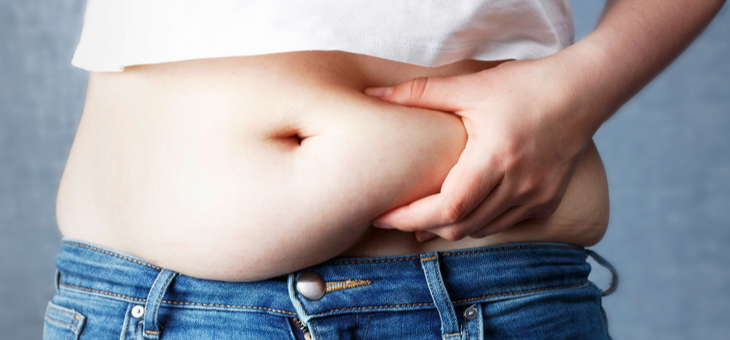As we get older, our metabolism slows down and many people become less active. Because of this, weight gain is often accepted as a natural part of ageing. While it is common, it still increases your risk of several unwelcome health conditions.
Different body types are more prone to carry weight and fat. Pear-shaped people will likely carry more fat on the lower part of their bodies, while people with an apple shape are more prone to carry fat around the abdominal area.
When many people picture ‘belly fat’, they think of the outer layer of fat that sits just below the skin on their tummies, known as subcutaneous fat. But the truth is that most belly fat is much deeper than just the ‘muffin top’ that hangs over the jeans. Visceral fat is packed around your organs, including your stomach, liver and intestines.
Belly fat increases your risk of developing diabetes, heart disease, fatty liver disease, high cholesterol and pancreatitis. Many doctors believe that this deep fat is a better determinant of health than either your weight or your BMI.
While a tape measure won’t tell you how much visceral fat you have, it can give you a clue about your risk of these health problems. For women, a waist measurement of more than 89 centimetres is cause for concern, while in men it’s 101 centimetres or more.
We’ve all heard the term ‘beer gut’, but while beer is packed with calories and can cause weight gain, there is no evidence to suggest it would cause weight gain around the mid-section. There is, however, some evidence that the sugar content in soft drinks can increase belly fat.
Some research has shown that men with more belly fat have weaker bones. Another study on pre-menopausal women found that those with more belly fat had lower bone density – a risk factor for osteoporosis.
Harvard Health suggests that fat cells are biologically active, producing hormones that interact with the rest of our bodies. These can disrupt your body’s normal hormonal balance. For this reason, it suggests thinking of your fat as an endocrine organ or gland.
Visceral fat also produces hormones that can affect your cell’s sensitivity to insulin, impact blood pressure and clotting and increase your risk of developing cardiovascular disease. These hormones may be what makes visceral fat so dangerous. Chemicals are released close to the portal vein that carries blood to the liver and could have a bearing on how the liver produces blood lipids.
Fortunately, when you begin to lose weight, this deep visceral fat is the first to go. Despite what some companies would like you to think, there is no single magic diet or workout routine that will trim down your belly fat. Regular exercise, drinking water and eating a healthy, balanced diet are the only ways to trim down. You also can’t target certain parts of your body, as you lose weight from all over.
Have you found yourself carrying more weight around the middle as you’ve aged? Are you concerned about the health effects of visceral fat?
If you enjoy our content, don’t keep it to yourself. Share our free eNews with your friends and encourage them to sign up.
Disclaimer: This article contains general information about health issues and is not advice. For health advice, consult your medical practitioner.

